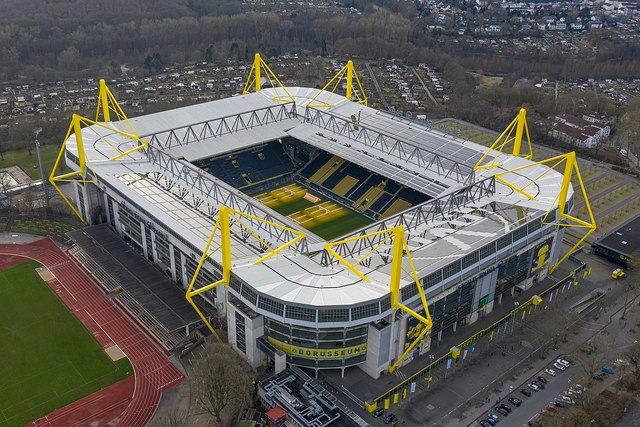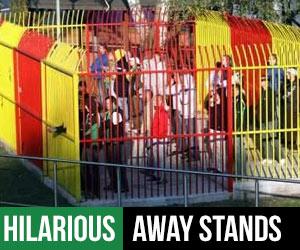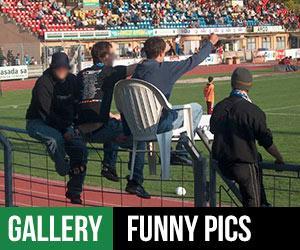Want to buy pyrotechnics? Visit pyro.ultras-tifo.net

Ten ultramodern Bundesliga 2 and Bundesliga arenas in Germany will serve as the host nation for this year's UEFA European Championship, which promises to display the summer game of the world spectacularly. bundesliga.com showcases the stadiums together with their amazing features.
1. Allianz Arena in Munich
- Team/Club: Bayern Munich
- Stadium’s Capacity: 75,024 people
- Games planned for Euro 2024: Six, including the semifinal and the opening game.
The Allianz Arena's 2760 inflated foil air-circulating panels illuminating the stadium are an architectural masterpiece. This design catches attention and provides a perfect setting for events like Andar Bahar Live, providing an optimal spectacular experience with its distinctive lighting.
The panels were initially limited to being illuminated in red, blue, or white. However, during the 2014 summertime, they were upgraded with LED lighting technology, allowing them to light up in any color to commemorate any significant event, including this tournament's opening game, a semi-final, and the 2024–2025 UEFA Championship League final.
During the renovation, the state installed over 300,000 Light-emitting diodes across twenty-six thousand square meters. Even from 75 kilometers away, on the peaks of mountains, the illumination is so remarkable. Inside this stadium, state-of-the-art technology is still in place.
For international sporting events, folding chairs that are easily lowered onto the ground level are installed in blocks 112 to 113 along the stand's south side. Furthermore, the four-story parking structure on the southern side of the stadium, which has approximately 9,800 parking spots, is Europe's biggest indoor football stadium parking lot.
2. Merkur Spiel-Arena in Düsseldorf
- Team/Club: Fortuna Düsseldorf Club
- Stadium’s Capacity: 54,600 People
- Games planned for Euro 2024: Five
Düsseldorf ultimately lost out on being chosen to host games at the Merkur Spiel-Arena, another stadium initially constructed with an eye on the World Cup in 2006.
Even when temperatures are below zero outdoors, the contemporary arena can maintain temperatures of about 15 degrees inside thanks to its closable roofing and heating system.
Fortuna defeated Union Berlin 2-0 in front of 38,123 fans, setting a new record for regional league attendance at the team's debut football match in the newly constructed stadium.
Fortuna has used the arena for most of its home games throughout the 2005–2006 season. Even after hosting multiple concerts, the 2011 Eurovision Singing Contest, and motor racing, the stadium is still used for numerous purposes.
3. Signal Iduna Park in Dortmund
- Team/Club: Borussia Dortmund
- Stadium’s Capacity: 81,365 People
- Matches planned for Euro 2024: Five
The fabled "Yellow Wall" comes to mind first about Signal Iduna Park. It is 40 meters high and 100 meters wide. Not only is the south side of the grandstand spectacular, with an inclination of 37°, making it ski jump steep, but it is also the tallest standing stadium in Europe, holding 24,454 people.
Dortmund has the highest annual attendance among all football teams worldwide, drawing in over 80,000 spectators every game. The formally called Westfalenstadion opened for business on the second of April 1974, when Borussia Dortmund and Schalke, longtime rivals, played a charity game.
On the second of April 1976, teams played the inaugural Bundesliga match in this stadium, but Dortmund was absent. On that date, Bochum, who relocated to what became the Westfalenstadion in April of 1976 while building work was ongoing on their new Ruhrstadion, played host to Schalke.
Six games from the 2006 FIFA World Cup, for example, Italy's semifinal victory while playing against Germany, were played on the field in addition to four matches from the 1974 tournament.
4. Olympiastadion in Berlin
- Club/Team: Hertha Berlin
- Stadium’s Capacity: 74,649.
- Games planned for Euro 2024: six, plus the final.
Hertha's stadium, ranked among Europe's most renowned sites, has a rich history dating back to the 1936 Olympics. Usain Bolt's historic 100-meter and 200-meter record-breaking runs at the World Championships 2009 are among the most notable events on the stadium's track. On Hertha's request, the league picked the games to include a meticulous refurbishment from 2000 to 2004.
The walkway connecting the changing rooms and the pitch also features an escalator to allow tired legs to relax at halftime. On the soccer field, Zinedine Zidane's professional career ended at the stadium at the World Cup's 2006 final, and several teams have reveled in DFB Championship final victories.
Barcelona won their sixth UEFA Champions League in Germany's capital in 2015, defeating Juventus; the Rolling Stones, U2, Ed Sheeran, Depeche Mode, Beyonce, and Jay-Z have also performed here. Which countries will face off in the final on July 14, 2024?
5. RheinEnergieStadion in Cologne
- Team/Club: Cologne.
- Stadium's Capacity: 50000 People
- Games planned for Euro 2024: five.
The stadium, formerly known as Sportpark Müngersdorf, began operations in 1923 on the directive of ex-German chancellor Adenauer Konrad. Until the erection of the Berlin Olympiadadion around 1936, the stadium was the biggest German sports venue.
The sports complex was refurbished in the early 1970s, when Cologne competed in the Velodrome, then again in preparation for hosting the 2006 Soccer World Cup.
The luminous towers at the ends of the stadium's grandstands are the RheinEnergieStadion's distinguishing feature. Since installing LED lights in 2016, people have lit them in various colors.
Throughout Cologne's home matches, they glow in white and red. They must focus on what's happening in the sport's stadium, including cheerleaders, noisy singing, and a goat just before the contest.
6. Deutsche Bank Park in Frankfurt
- Team/Club: Eintracht Frankfurt, Frankfurt.
- Capacity: 51,500
- Games planned for Euro 2024: five.
The nation constructed Frankfurt Stadium as the fourth arena on a similar property. The country completed the first Waldstadion in May 1925. From 2002 to 2005, they reconstructed the structure in five distinct phases. They eliminated the sprinting track and relocated the arena’s levels significantly nearer the playing pitch.
Before the remodeling, fans could sit as far as 125 meters farther from the match. The maximum distance is now 60 meters. It's worth noting that Mainz, Eintracht, Wehen Wiesbaden, FSV Frankfurt, plus hometown rivals Offenbach have all played at this stadium.
Like most sports venues, it has hosted the 2006 and 1974 World Cups, Euro 1988, 2005 FIFA Federations Cup, and the 2011 (FWWC) FIFA Women's World Cup championship, pitting Japan and the United States. In 2023, it will also host two NFL regular season games.
Conclusion
Finally, the German stadiums ready for Euro 2024 showcase an outstanding juxtaposition of modern amenities, profound football heritage, and a passion for sustainability that will deliver memorable experiences to participating teams and fans.











